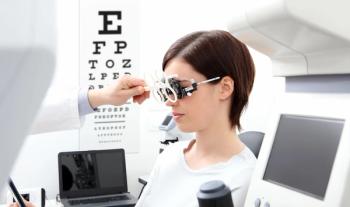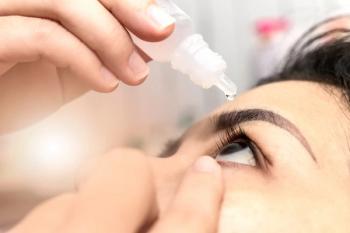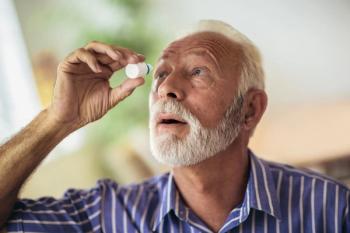
- January/February digital edition 2025
- Volume 17
- Issue 01
What is hiding at Kessing's Space?
From toxins to pollutants, the modern world contains harmful elements that impact the ocular surface.
“What is your job and where do you work?” has always been one of the first questions in my clinical history for new patients. Understanding the type of work and environment that patients spend a good part of their day in often offers some important clues to the reason for their visit.
Does the patient live or work in a “sick building”? Sick building syndrome (SBS) is a condition in which patients develop symptoms of illness or become infected with chronic disease from the building in which they work or reside.1 SBS is also known as building-related illness, building-related symptoms, or idiopathic environmental intolerance. Symptoms of SBS include but are not limited to headache, fatigue, dizziness, nausea, and nose, throat, and eye irritation.
Factors that precipitate patients’ symptoms can include:
- Chemical pollutants from indoor sources such as adhesives, carpeting, upholstery, manufactured wood products, paints, copy machines, pesticides, and cleaning agents that may emit volatile organic compounds (VOCs), including formaldehyde
- Ozone produced by printers and photocopiers
- Biological pollutants such as viruses, bacteria, dust mites, pollen, and toxic black mold
Trapped in the ocular surface
In the boroughs of New York, where I work and live, subway travel to and from work is a daily occurrence for many. It has come to light that fine iron particles from subway tracks, among a myriad of other pollutants, are released into the air of poorly ventilated subway tunnels.3 Additionally, a recent study in New York City draws a link between a fungus found on mice droppings in the city's homes and workspaces and asthma rates in exposed humans.4
Furthermore, the exposed mucosal tissue of the ocular surface can come in contact with microplastic particles contained in toiletries, tap water, cosmetics, and air. Data from murine model experiments have demonstrated that microplastics can stimulate ocular surface inflammation and damage, induce apoptosis, and reduce corneal conjunctival and goblet cell epithelial cell viability.5
Is it possible that some or all of these toxins/pollutants/micro-foreign bodies/microorganisms become trapped within Kessing’s Space (the narrow tear-filled separation of the tarsal conjunctiva from the eyeball that reduces friction during eye movements and blinking)? Especially when tear volume and exchange is reduced, can these toxins then perpetuate smoldering inflammation of the ocular surface? The palpebral conjunctiva and fornix house a unique microenvironment that is not subject to the mechanical forces of the blink that extrude harmful irritants to the cornea and interpalpebral bulbar conjunctiva.6
There is evidence in the literature to support that lavage of Kessing’s Space effectively reduces MMP-9 expression on the ocular surface and improves the symptoms of dry eye disease.7-9 If you think about it, patients have been using eyewash cups made from a variety of materials including silver, glass, and aluminum for hundreds of years; silver eyecups were used as early as the 16th century. It was not until the 18th century when more common materials such as ceramics and glass made them popular and accessible to the general public. Do you remember the classic cobalt blue eyewash cup attached to the bottle of collyrium eyewash produced starting in 1911 (Wyeth Pharmaceuticals)?10 Patients have found relief from bulbar lavage for a very, very long time. Otherwise, Bausch + Lomb,11 ULINE,12 and Medique Products13 are some of the many companies that currently provide eye washing irrigation solutions.
Should routine conjunctival irrigation be part of our treatment strategies in dry eye and ocular surface disease? What would be the protocol? What devices to potentiate conjunctival “wash” efforts should be employed? Is there a downside to “conjunctival wash” therapy? Of note, nonpreserved eyewash solution has no detrimental effects on the tear film and the ocular surface mucins.14 Additional data are required to answer these queries.
Until then, what are your thoughts? Contact me with your experience.
References:
World Health Organization Regional Office for Europe. Sick building syndrome. Accessed December 17, 2024.
https://www.wondermakers.com/Portals/0/docs/ Sick%20building%20syndrome%20by%20WHO.pdf Redlich CA, Sparer J, Cullen MR. Lancet.1997;349(9057):1013-1016. doi:10.1016/S0140-6736(96)07220-0
Azad S, Ferrer-Cid P, Ghandehari M. Exposure to fine particulate matter in the New York City subway system during home-work commute. PLoS One. 2024;19(8):e0307096.doi:10.1371/journal.pone.0307096
Liao Y, Gao IH, Kusakabe T, et al. Fungal symbiont transmitted by free-living mice promotes type 2 immunity. Nature. Published online November 27, 2024. doi:10.1038/s41586-024-08213-2
Zhou X, Wang G, An X, et al. Polystyrene microplastic particles: in vivo and in vitro ocular surface toxicity assessment. Environ Pollut. 2022;303:119126. doi:10.1016/j.envpol.2022.119126
de Paiva CS, St Leger AJ, Caspi RR. Mucosal immunology of the ocular surface. Mucosal Immunol. 2022;15(6):1143-1157. doi:10.1038/s41385-022-00551-6
Mayer N, Kondapalli SSA, Venkateswaran N, Saeed HN. The efficacy of an irrigating eyelid retractor-facilitated ocular rinse on MMP-9 expression and dry eye disease. Adv Ophthalmol Pract Res. 2024;4(3):142-146. doi:10.1016/j.aopr.2024.05.002
Li X, Kang B, Eom Y, et al. The protective effect of an eye wash solution on the ocular surface damage induced by airborne carbon black exposure. Cornea. 2020;39(8):1040-1047. doi:10.1097/ico.0000000000002304
Kim A, Postnikoff CK, Nichols KK. Nonpharmaceutical eye wash may reduce matrix metalloprotease-9 (MMP-9) in dry eye. Invest Ophthalmol Vis Sci. 2020;61(7):100.
National Museum of American History. Eyecup. Accessed December 17, 2024.
https://americanhistory.si.edu/collections/object/nmah_994422 Yazu H, Kozuki N, Dogru M, Shibasaki A, Fujishima H. The effect of long-term use of an eyewash solution on the ocular surface mucin layer. Int J Mol Sci. 2019;20(20):5078. doi:10.3390/ijms20205078
Articles in this issue
10 months ago
Education should be current, relevant, useful10 months ago
How do GLP-1 receptor agonists affect ocular health?10 months ago
Debunking myths about keratoconusNewsletter
Want more insights like this? Subscribe to Optometry Times and get clinical pearls and practice tips delivered straight to your inbox.
















































.png)


